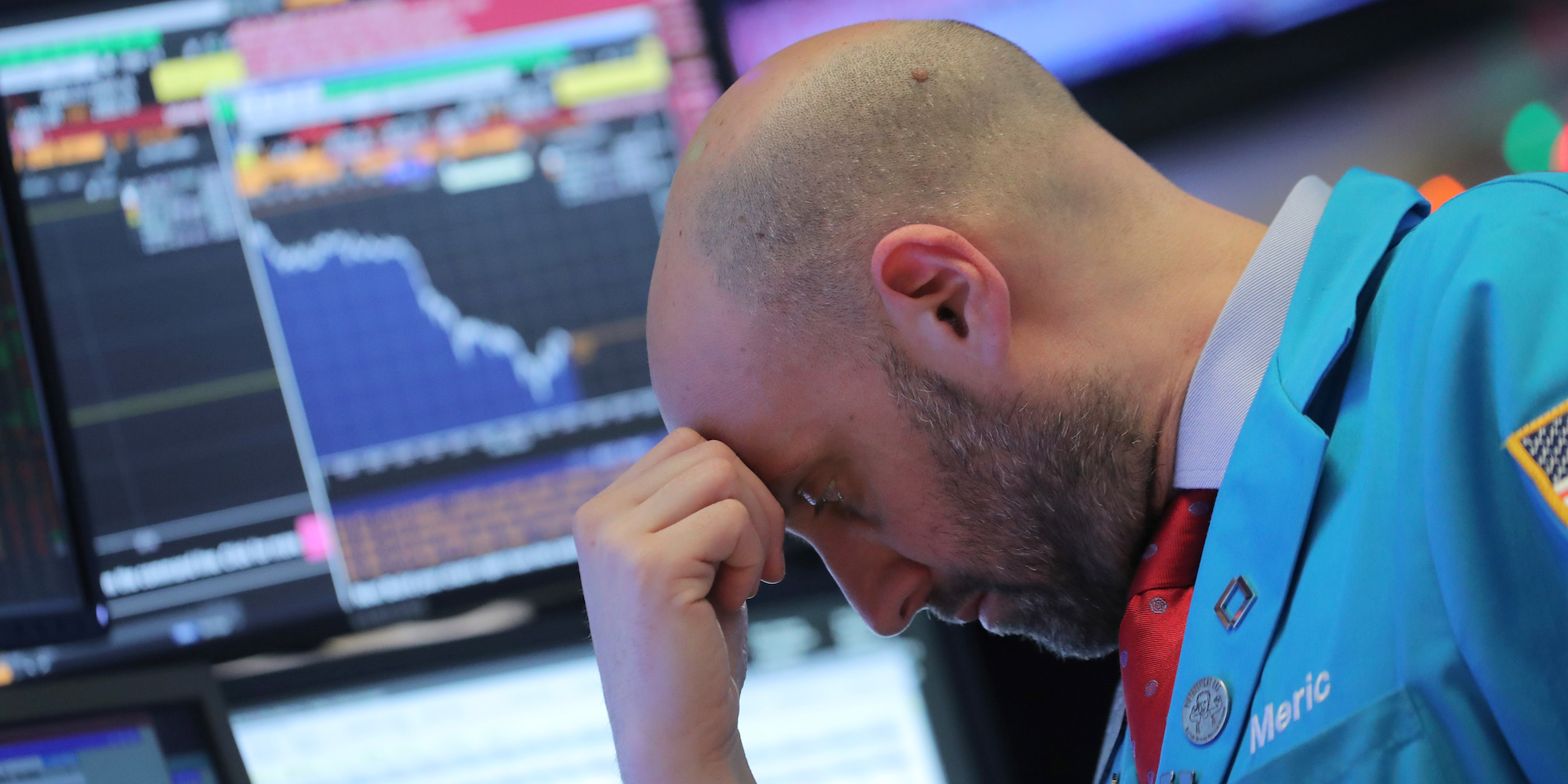- The spread between two- and 10-year Treasury yields fell below zero, an occurrence that’s preceded each of the last seven recessions.
- The yield on the 30-year note also fell to a new low, amplifying recession fears.
- Weak economic data in China and Germany drove the global bond rally that led to the inversion, which had been a long time coming.
- Investors are worried that the Federal Reserve isn’t moving fast enough to keep the economic expansion going, and are seeking haven in long-term treasuries.
- Read more on Markets Insider.
The spread between two- and 10-year Treasury yields has fallen below zero for the first time since 2007. The relationship is the most closely watched section of the so-called yield curve, and has inverted before each of the last seven recessions.
The inversion has been a long time in the making, as the curve has been flattening for months. The spread got the final push into negative territory on Wednesday as disappointing Chinese retail sales and industrial output combined with a German economic contraction to muddy the outlook for global growth.
“We’ve been in a bit of a perfect storm for the rates market recently,” Charlie Ripley, senior investment strategist at Allianz Investment Management, told Markets Insider in an interview. “This has definitely been a strong signal for recession so people are watching this very closely.”
A decline in the yield on 10-year Treasurys helped drive the inversion, falling another 10 basis points to 1.60%, its lowest level since mid-2016. The move comes as investors pile into longer-dated high-quality government bonds amid mounting economic concerns. Meanwhile, two-year yields fell seven basis points and sit close to their lowest levels since late 2017.
The yield curve is a rigorously monitored recession signal because it gives a view at how investors are weighing short-term versus long-term investments, and what kind of rate environment they're expecting to see.
Many economists - including the New York Federal Reserve - also use the spread between 3-month and 10-year Treasurys as a recession signal. That section of the yield curve has been inverted since March, while the New York Fed's recession probability indicator was at 31% last month, one of the highest readings since the Great Recession.
Ripley says part of what's driven this latest inversion is concern the Federal Reserve is moving too slowly to keep the economy afloat at the tail-end of an expansion that has lasted more than a decade. Even after the Fed delivered the first rate cut since the Great Recession in July, markets panicked that the quarter-point cut wasn't enough.
"If we continue to see a flight to quality in the longer end of the curve at some point we would expect that we're nearing a recession," Ripley said.
There are signs of distress elsewhere in the yield curve as well - overall, yields have been flattening as investors panic. On Wednesday, 30-year rates hit a record low as well, showing that investors are seeking haven in the longer end of the curve. This sentiment also contributed to the falling 10-year yield.
It is expected that bond rallies will continue as well as whiplash as investors watch for positive news on trade, which has been a large driving force behind worries of a slowing global economy. The two- and 10-year curve narrowly avoided inversion on Tuesday after the Trump administration said it would delay tariffs on some goods imported from China until December - an announcement that temporarily eased nerves.
"There's going to be a lot of volatility in the yield curve over the next couple of months," Leslie Falconio, a senior strategist at UBS Global Wealth Management told Markets Insider in an interview.

